Enemy Mugshots #2: Viruses Given what’s happening in the world right now, I thought it might be an apt time to talk about the virus enemies in Nanocell Squad, as it might be interesting for people to read a bit more of the science behind viruses and how they work.
Also, in the game you can shoot viruses. So there’s that, too. Maybe that’s cathartic for you?
I’ll cover the virus enemy design and then go into the science behind them in a bit more detail. Then I’ll talk a bit about the current pandemic, COVID-19.
In the game Viruses are the second enemy you meet in the game. They’re not hard to kill, but they are very destructive if they manage to infect any of your units or body cells. They’ll use your cells to produce copies of themselves.
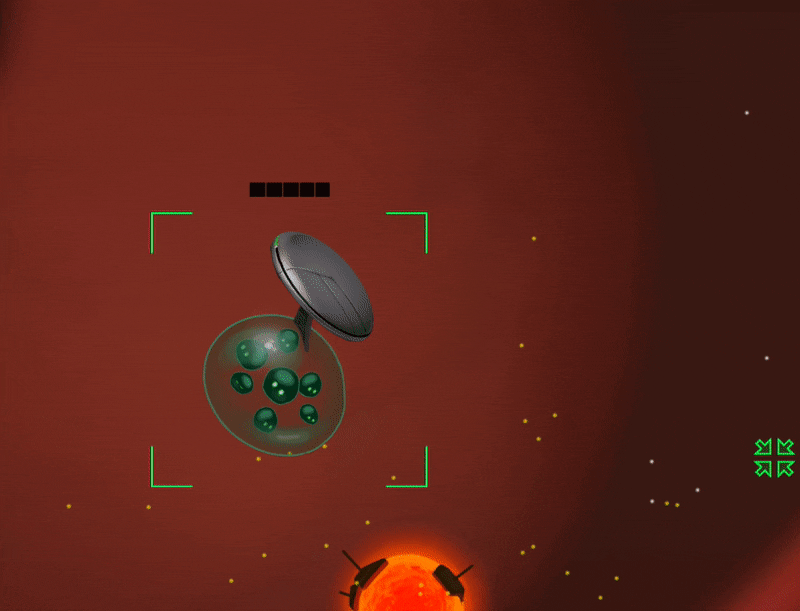 An infected cell bursting to produce several virions
An infected cell bursting to produce several virionsJust one virus enemy infecting a cell can cause havoc and tip the tide in favour of the enemy!
This is the only way viruses can replicate in the game. However there are some reasons why you might WANT to get infected:
- Infected cells are not attacked by other enemies
- If there’s a virus with a good mutation/upgrade that you want to carry on, letting it infect your units is a good way to do this (we’ll talk about mutations and upgrades in a later post)
- Reproducing viruses have a chance to turn into a virus that attacks other enemy cells as well as yours! (Bacteriophages)
So it’s not a simple decision to steer clear of these viruses in the game. It’s another tactical choice the player can make. One element of the game we’re working on is to produce an interesting ecosystem of enemies for the player - something to give them lots of interesting choices, but more on this in another post.
DesignThere are two virus types in the game.
The first type of virus infects only units. It looks like a sphere:
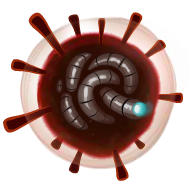
For the design of the virus, we chose to model it on the ‘flu’ (influenza) virus. In images the genetic material wrapped up inside the virus capsule looks a bit like a snake, so I thought that was a cool angle to go on, as you can see from the infection animation:
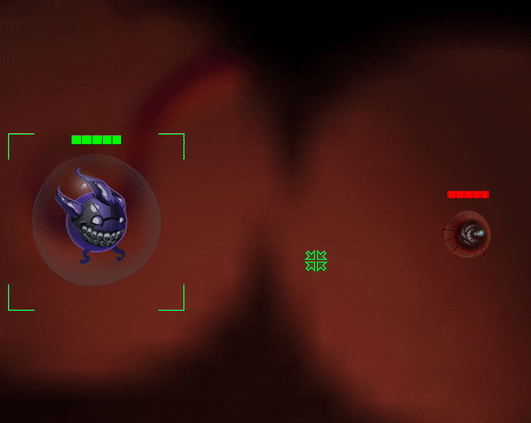
This virus will release all its copies (virions) at once by bursting the host cell. A bit like that scene in
Alien, except with more gruesome offspring!
The second type of virus infects units and body cells. It looks a bit like a snake:
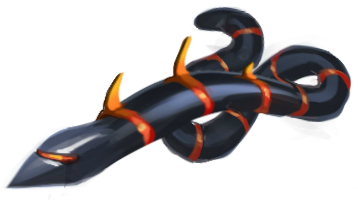
We modelled its look off the ebola virus (below), which looks a bit like a snake due to its filamentous crooked structure:
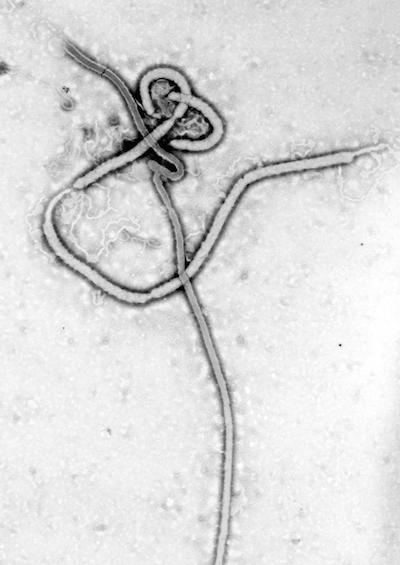 Electron microscope image of an ebola virus
Electron microscope image of an ebola virusAnd it has a similar infection animation to the first virus type:
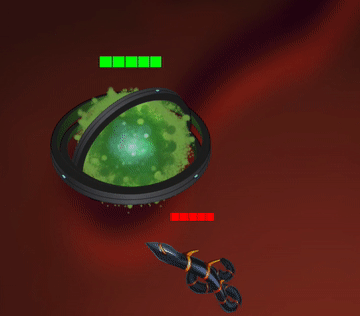
These viruses will release virions one at a time, each replication depletes the host cell health until it dies.
The ScienceViruses carry around their own genetic material but not the tools to make it - that’s why they need to hijack a more complete cell, like human ones, in order to reproduce. It’s like only carrying round the instructions for a piece of furniture, then going into someone else’s house and using their equipment and wood to make it!
The basic structure of a virus is a protective coat (capsid), inside of which is their genetic material, which can be in the form of RNA or DNA. I won’t go into the difference between these two here, but basically they result in slightly different replication mechanisms once in the cell.
Once inside a cell, viruses produce replicas that either spread through bursting the host cell (lysis) or ‘splitting’ from the cell through its membrane (budding). The second one sounds nicer doesn’t it? But it still kills the host cell!
Below is a simplified diagram of the Hepatitis C virus infecting and reproducing in a cell:
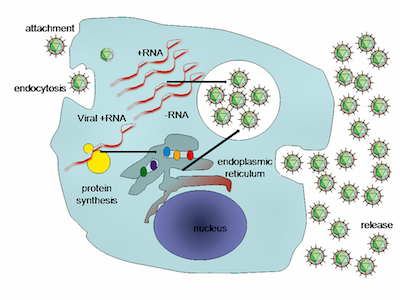
This reproduction technique can lead to viruses jumping across host species (like coronavirus). This can happen when a host animal is infected with two different strains of the same virus - their DNA recombine to allow the virus to infect human cells.
This is what happened with Coronavirus.
The term ‘Coronaviruses’ actually covers several viruses that cause respiratory issues in mammals, including SARS, which you may remember from 2003. The current virus is known as SARS-CoV-2 and is genetically very similar to SARS. The official title of the disease it causes is COVID-19.
As you can see from the image below, the overall structure remains very similar to usual viruses with a protective envelope and then the RNA strand inside. The proteins on the envelope help dictate what cells it can bind to and use as a host.
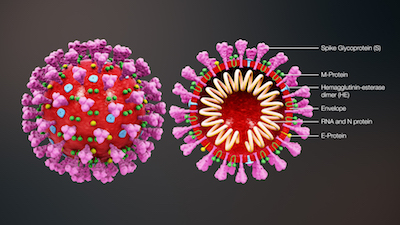
Vaccines are available for some viral diseases (eg: seasonal flu). There are different types of vaccines, but overall their goal is to introduce the virus to the immune system in a controllable, restricted fashion so the immune system can learn to recognise it in the future.
Once vaccinated, your immune system responds much quicker to actual infections and this means you can defeat the virus without getting the illness it causes.
I hope this overview helps some of you appreciate the ‘enemy’ we’re up against and how it works, but also how it can be defeated. If you’re anything like me, understanding the facts in a bit more detail helps calm me down!
If anyone has any questions on viruses of COVID-19 please just ask and I’ll do my best to help..
Thankfully playing games is a good activity when doing social distancing / self-isolation! If you’re interested, please do check out our demo at
itch.io or
indieDB.
Also don’t forget to
sign up to our newsletter to be the first to hear about new updates for the game!
Anyway, stay safe and stay isolated!
Rich
 Community
Community DevLogs
DevLogs NanoCell Squad - A Sci-Fi Action-Adventure-RTS Inspired By The Immune System
NanoCell Squad - A Sci-Fi Action-Adventure-RTS Inspired By The Immune System Community
Community DevLogs
DevLogs NanoCell Squad - A Sci-Fi Action-Adventure-RTS Inspired By The Immune System
NanoCell Squad - A Sci-Fi Action-Adventure-RTS Inspired By The Immune System
